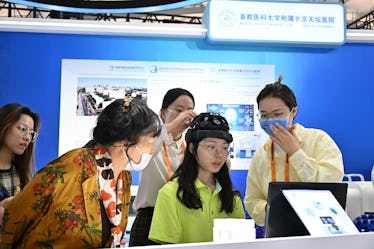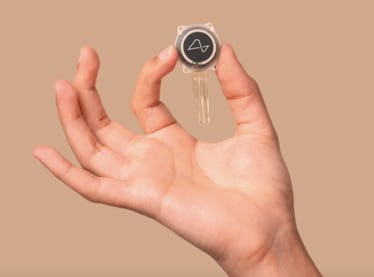A team of German scientists have been circling the skies above northern Australia and the Pacific Ocean in a high-tech research aircraft studying the atmospheric chemistry occurring above the clouds.
The Chemistry of the Atmosphere: Field Experiment (CAFE) team has tracked weather events and taken samples and measurements up to 15 kilometres above sea level.
Professor Mira Pöhlker from the Leibniz Institute for Tropospheric Research and Max Planck Institute for Chemistry said the team's research would help refine weather and climate models leading to better forecasts and projections.
"This really helps us to understand the [climate] systems better to better predict how it will change in the future," Professor Pöhlker said.
"To predict it, we really need to understand it."
The CAFE-Pacific mission is the third research project of its kind, with atmospheric studies undertaken in the skies over Africa and South America from 2018.
Southern skies 'exciting' to explore
The region offshore from Australia's north-east is of particular interest to the CAFE team for its high ocean temperature, which causes the strongest high-reaching convection in the world.
It produces columns of upward-rising warm air, which act as highways for heat, moisture, particulates, and gasses to be transported from the surface of the planet high into the atmosphere.
Dr Clara Nussbaumer, a postdoctoral researcher working on the project, said the tropics were an exciting place to explore as an atmospheric scientist.
"The combination of intense solar radiation, mixing due to convection, large regional differences in lightning activity, and contrasting tropical waters and the Australian continent, means there's everything you need for a lot of interesting atmospheric chemistry to occur," she said.
Regions in the southern hemisphere, including Australia and the Pacific, have been specifically chosen due to their remoteness.
"It's the most similar to pre-industrial conditions, so for us, this is what really makes it interesting," Dr Nussbaumer said.
"We can sample the air and do some comparisons [to the northern hemisphere, which allows us] to make some projections on what it could look like with ongoing greenhouse gas emissions."
Professor Pöhlker said there were many more people in the northern hemisphere.
"If we want to understand how human beings influence all the processes, we need to get that contrast, which we're able to do here," she said.
Flying laboratory high in the sky
The researchers are conducting their studies in a state-of-the art research aircraft dubbed HALO (High Altitude and Long Range Research Aircraft).
The aircraft is a flying laboratory equipped with highly-sensitive instruments normally found in high-end chemistry laboratories.
Most of the instruments have been modified or custom-built.
Professor Pöhlker said the highly-modified Gulfstream G550 jet's long-range capabilities had assisted the scientific mission significantly.
"We can reach places 10,000 kilometres away. We can go very high, up to 15 kilometres in the atmosphere, and we can stay in the air for 12 hours, which gives us a lot of freedom to do really great research up in the air," she said.
"We can measure pressure, temperature, water vapour in the air with accuracy from the nose on the aircraft, which can get that information without any influence from the actual aircraft."
The CAFE-Pacific team clocked more than 150 hours flight time in the HALO during the two-month scientific mission travelling north from Cairns to Papua New Guinea and the equator, west across the Arafura Sea, and east across the Coral Sea.






